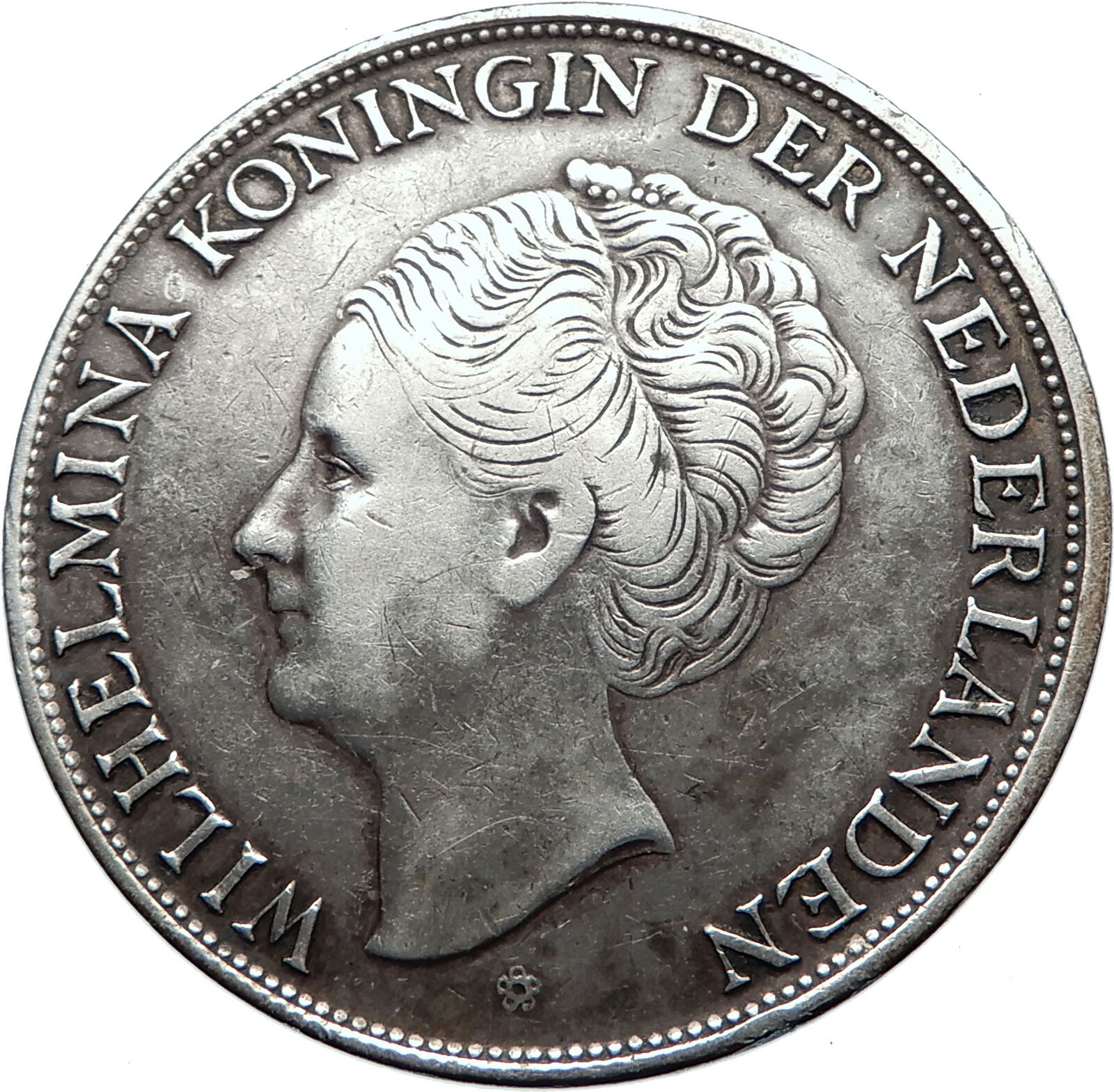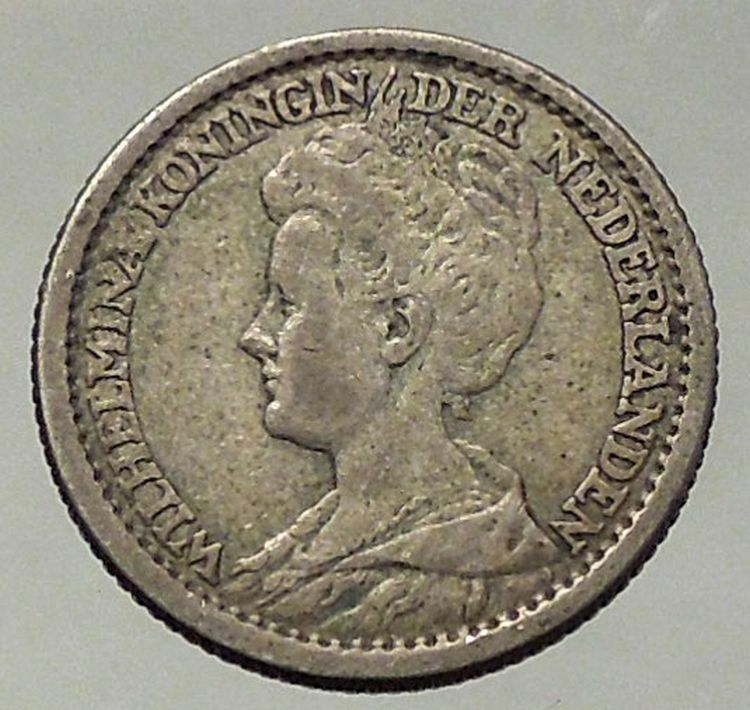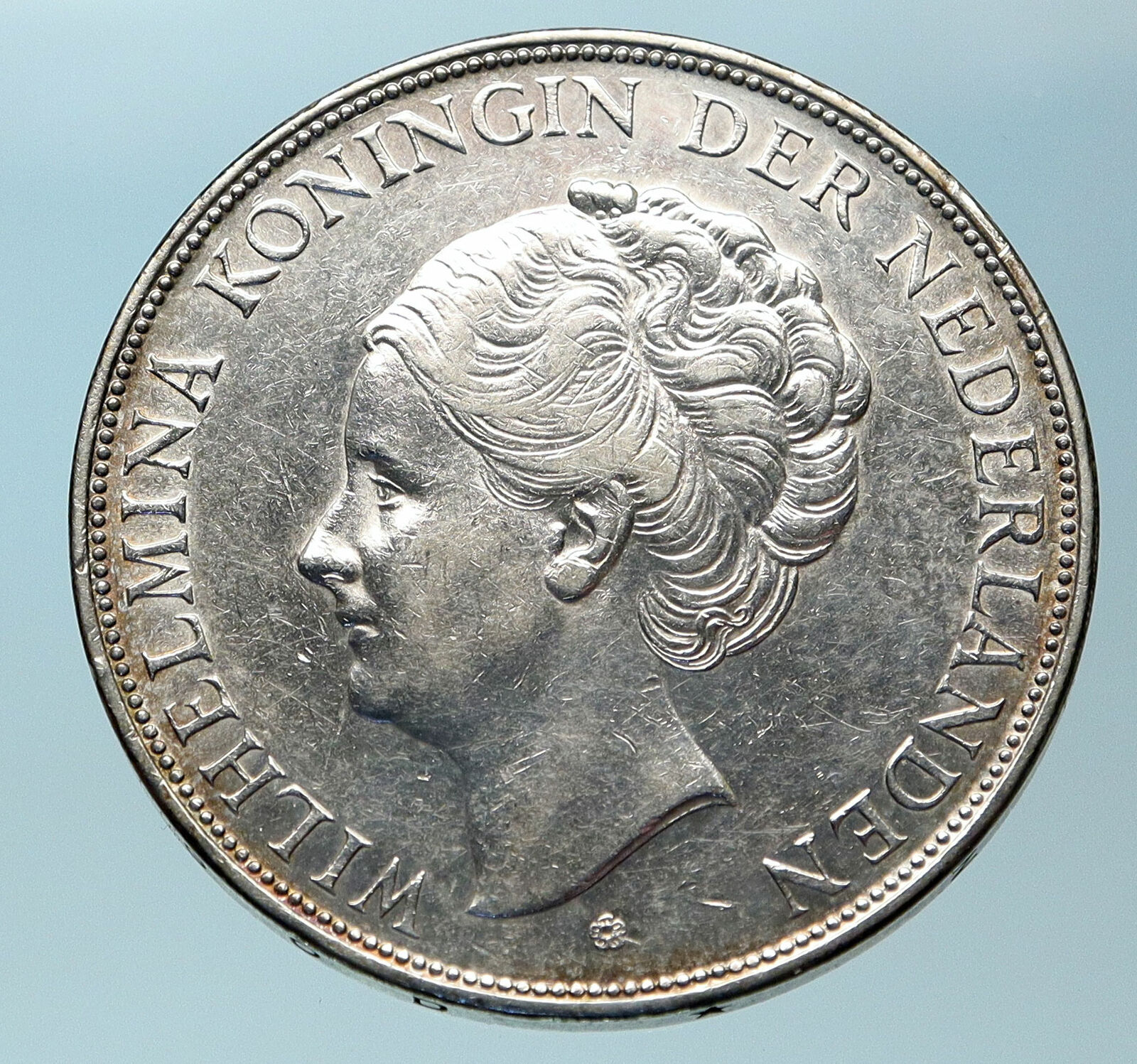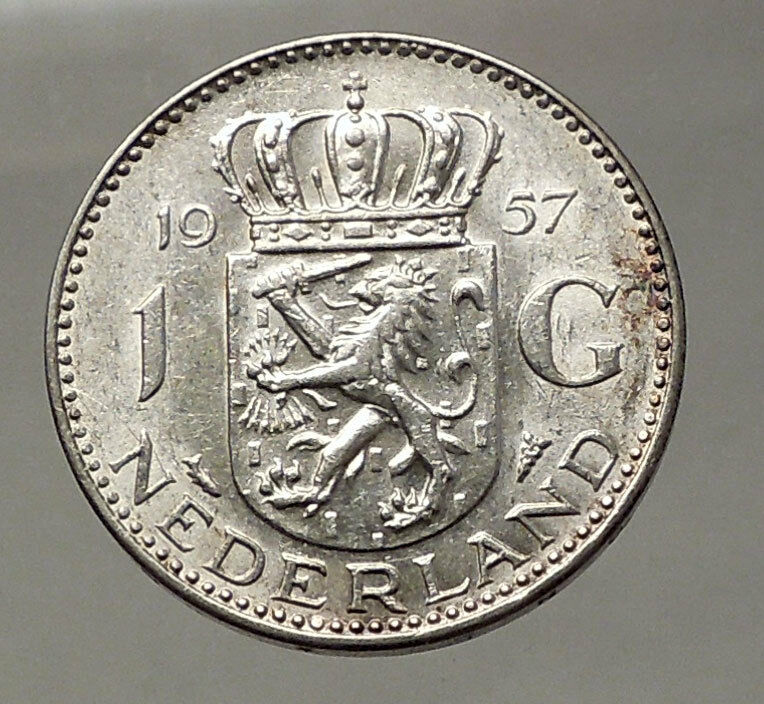|
Netherlands under Juliana – Queen of the Netherlands: 6 September 1948 – 30 April 1980
1957 Silver 1 Gulden 25mm (6.40 grams) 0.720 Silver (0.1505 oz. ASW)
Reference: KM# 184 (1954-58*-67)
JULIANA KONINGIN DER NEDERLANDEN, Head of Queen Juliana right.
1 G NEDERLAND around coat of arms of Netherlands dividing year above.
Edge Lettering: GOD * ZIJ * MET * ONS *
You are bidding on the exact item pictured, provided with a Certificate of Authenticity and Lifetime Guarantee of Authenticity.

Juliana (Dutch pronunciation: [ˌjyliˈjaːnaː]; Juliana Louise Emma Marie Wilhelmina; 30 April 1909 – 20 March 2004) was Queen of the Netherlands from 1948 until her abdication in 1980.
Juliana was the only child of Queen Wilhelmina and Prince Henry of Mecklenburg-Schwerin. She received a private education and studied international law at the University of Leiden. In 1937, she married Prince Bernhard of Lippe-Biesterfeld with whom she had four children: Beatrix, Irene, Margriet, and Christina. During the German invasion of the Netherlands in the Second World War, the royal family was evacuated to the United Kingdom. Juliana proceeded to relocate to Canada with her children, while Wilhelmina and Bernhard remained in Britain. The royal family returned to the Netherlands after its liberation in 1945.
Due to Wilhelmina’s failing health, Juliana took over royal duties briefly in 1947 and 1948. In September 1948 Wilhelmina abdicated and Juliana ascended to the Dutch throne. Her reign saw the decolonization and independence of the Dutch East Indies (now Indonesia) and Suriname. Despite a series of controversies involving the royal family, Juliana remained a popular figure among the Dutch.
In April 1980, Juliana abdicated in favour of her eldest daughter Beatrix. Upon her death in 2004 at the age of 94, she was the longest-lived former reigning monarch in the world.
.svg/220px-Kingdom_of_the_Netherlands_(orthographic_projection).svg.png)
 The Kingdom of the Netherlands, commonly known as the Netherlands, is a sovereign state and constitutional monarchy with territory in western Europe and in the Caribbean. The Kingdom of the Netherlands, commonly known as the Netherlands, is a sovereign state and constitutional monarchy with territory in western Europe and in the Caribbean.
The four parts of the Kingdom – Aruba, Curaçao, Sint Maarten and the Netherlands – are constituent countries (landen in Dutch) and participate on a basis of equality as partners in the Kingdom. In practice, however, most of the Kingdom affairs are administered by the Netherlands – which comprises roughly 98% of the Kingdom’s land area and population – on behalf of the entire Kingdom. Consequently, the countries of Aruba, Curaçao, and Sint Maarten are dependent on the Netherlands for matters like foreign policy and defence, although they are autonomous to a certain degree with their own parliaments.
 The vast majority in land area of the constituent country of the Netherlands (as well as the Kingdom) is located in Europe, with the exception of the Caribbean Netherlands: its three special municipalities (Bonaire, Saba, and Sint Eustatius) that are located in the Caribbean. The constituent countries of Aruba, Curaçao, and Sint Maarten are located in the Caribbean as well. The vast majority in land area of the constituent country of the Netherlands (as well as the Kingdom) is located in Europe, with the exception of the Caribbean Netherlands: its three special municipalities (Bonaire, Saba, and Sint Eustatius) that are located in the Caribbean. The constituent countries of Aruba, Curaçao, and Sint Maarten are located in the Caribbean as well.
|






.svg/220px-Kingdom_of_the_Netherlands_(orthographic_projection).svg.png)
 The Kingdom of the Netherlands, commonly known as the Netherlands, is a sovereign state and constitutional monarchy with territory in western Europe and in the Caribbean.
The Kingdom of the Netherlands, commonly known as the Netherlands, is a sovereign state and constitutional monarchy with territory in western Europe and in the Caribbean. The vast majority in land area of the constituent country of the Netherlands (as well as the Kingdom) is located in Europe, with the exception of the Caribbean Netherlands: its three special municipalities (Bonaire, Saba, and Sint Eustatius) that are located in the Caribbean. The constituent countries of Aruba, Curaçao, and Sint Maarten are located in the Caribbean as well.
The vast majority in land area of the constituent country of the Netherlands (as well as the Kingdom) is located in Europe, with the exception of the Caribbean Netherlands: its three special municipalities (Bonaire, Saba, and Sint Eustatius) that are located in the Caribbean. The constituent countries of Aruba, Curaçao, and Sint Maarten are located in the Caribbean as well.




